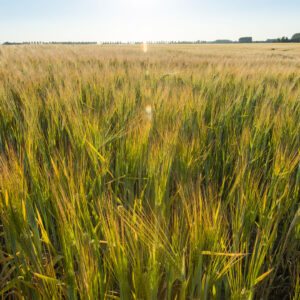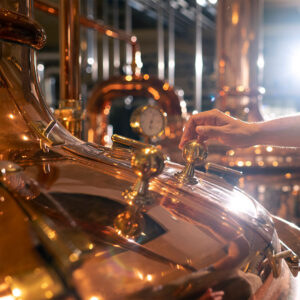Ask Jos – Navigating the Challenges of Global Increasing Gelatinization Temperatures in Barley

Dear Brewers,
As we embark on the journey into the brewing landscape of 2024, we find ourselves facing a unique challenge – one that stems from the unpredictable shifts in weather patterns attributed to global warming.
The barley harvest of 2023 poses a particular issue, with a gelatinization temperature peaking at 68°C and a second lower peak around 75°C. This global phenomenon has significant implications for the brewing industry and process, requiring a nuanced understanding and strategic approaches. The increasing gelatinization temperatures are not a new; however, we are now crossing crucial temperature thresholds, where gelatinization temperatures exceed the denaturation temperatures of certain enzymes that impact brewing. You may recall me touching on this issue in years past. After plenty of questions at BrauBeviale, a refresher feels timely. Though complex, this needn’t hamper our craft with a bit of creativity!
The Problem Unveiled: During the barley growing phase, and in particular the grain filling period, irregularities in the starch granule structure occur. Under optimal conditions, barley obtains large, easily to break down starch granules. However, the intermittent filling and stopping of amyloplast development, coupled with fluctuations in dryness and temperature, lead to the formation of smaller, more resistant starch granules. In the past two decades, we have seen this happening more frequently than ever before, likely due to climate change leading to more variable weather conditions during grain filling, and this phenomenon is not expected to diminish in the near future.
These smaller starch granules resist breaking down during normal germination and brewing processes. They only succumb to breakdown through heat, but if this heat surpasses the denaturation temperature of beta-amylase (65°C), the starch from these granule cannot be converted into maltose. If the temperature falls below the denaturation temperature of alpha-amylase (max 75-78°C), the starch can still be broken down into glucose (with extensive action) and other sugars, fermentable or not.
In your brewery these issues might manifest themselves in slower lautering times, filtration problems and poorer efficiencies. Also under attenuated or hazy final beer is a telltale sign that there is residual unfermented starch remaining. The iodine test will confirm this by still being positive for starch.
Understanding the Trends: In light of these challenges, it’s crucial to adapt to the trends in the brewing world. One prevalent method is the use of enzymes like Ultraflow Max from Novozymes. This enzyme, containing beta-glucanase and xylanase, breaks down residual beta-glucans and especially arabino-xylan and is more temperature resistant. This latter compound often causes filtration difficulties. However, caution is advised, as enzymes have different origins (fungi, bacteria) and optimal (higher) temperatures, impacting the brewing process. Excessive use may result in a loss of residual extract, affecting the fullness of the beer’s flavor.
- Opt for Enzymes: Experiment with enzymes, for example, Ultraflow Max, to break down troublesome compounds without relying solely on high temperatures. Remember to understand the optimal temperature for these enzymes. Keep in mind that using too much of this will have negative effects on mouthfeel and foam stability.
- For more traditional brewers: If you choose to go the traditional route, consider mashing in at 65°C. Be meticulous with temperature control. Beta-amylase works swiftly at this temperature, converting all unlocked starch into maltose. Subsequently, raise the temperature to 72-75°C for a saccharification rest. This allows the ungelatinized starch to undergo gelatinization and be broken down by alpha-amylase. Finish by mashing out at 78°C. Testing is crucial here; small starch grains need to have a gelatinization temperature below 78°C for successful experimentation.
- Attempt a Decoction Mash: This old technique involves boiling a portion of the mash to fully gelatinize starches before adding back to the main mash. While more intensive, creating this decoction can aid conversation of stubborn starch granules. Use 20-30% of the mash, bring to a brief boil, then stir back into the primary mash already at 65°C to integrate enzymes and achieve saccharification so the mash reaches 72°C. Rest 10-15 min and mash off at 78°C. The intensive gelatinization can pay off!
Remember, the success of these methods can be monitored by checking the wort with a fast iodine test, indicating the remaining starch content. Aim for the smallest possible value.
In navigating the challenges presented by the barley of 2023, a blend of innovation, careful experimentation, and adherence to brewing fundamentals will undoubtedly lead to exciting and unique brews.
More research is being conducted at universities worldwide as this is a relatively new phenomenon, but something we do not expect to go away anytime soon. Researchers continue investigating enzyme blends, mashing techniques, and barley genetics to tackle these issues. Ongoing advances promise to offer new solutions over time.
If you are facing any issues with this topic and want to learn more about it, please feel free to reach out at AskJos@TheSwaen.com
Happy brewing!
Cheers,
Jos

